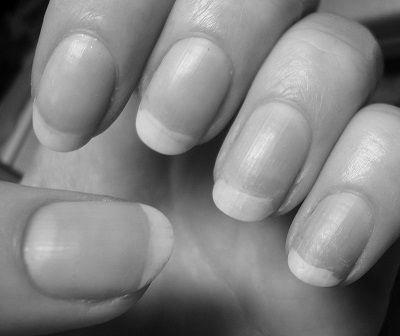Why Are My Nails Yellow?
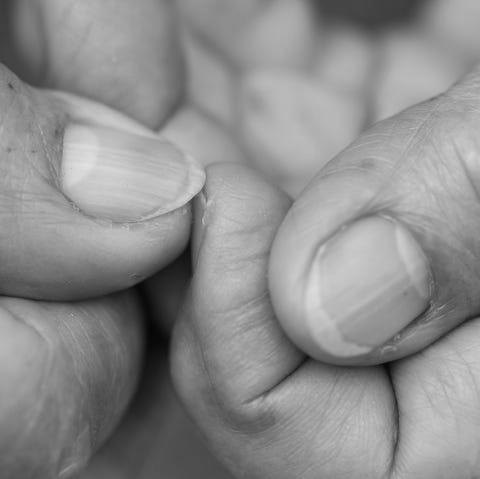
You’re not alone if you’ve ever wondered why your nails are yellow. There are many different reasons your nails might be this way, from a vitamin deficiency to a fungal infection. We’ve listed some of the most common causes below. Also, read on to learn more about what you can do about it. If you’ve noticed a sudden change in the color of your nails, see your doctor. A dermatologist can determine the fungus causing your yellow nails and give you a treatment plan that will help cure your condition.
Onychomycosis
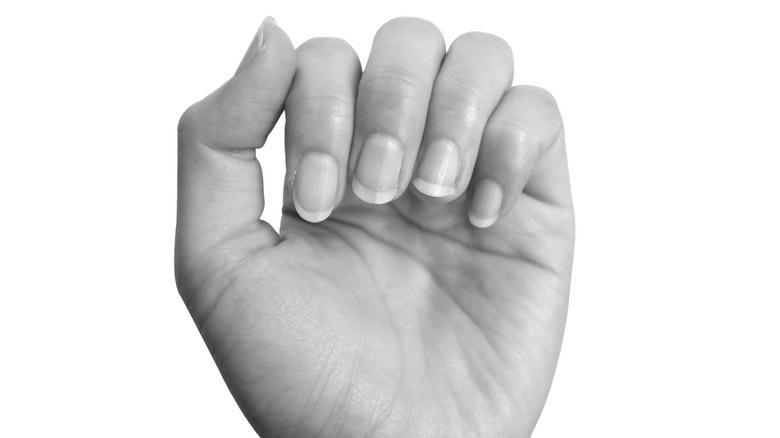
If you’re wondering, “Why are my nails yellow due to onychomycosis?” you’re not alone. Onychomycosis is a fungus that affects the nail, more commonly on the toenail, and is caused by dermatophyte fungi. The infection typically begins as a thin, yellow layer, turning white or brown. It’s also common to develop thickened nail tissue, which progresses towards the nail root.
Fungal infections affect nails by invading keratin, the protein that makes up skin and nails. While onychomycosis affects ten percent of the adult population, the risk increases with age. About half of people over the age of 70 develop it. Those with poor blood circulation may be at increased risk of this infection. A fungus can cause your nails to turn yellow, but you can take steps to prevent it.
In many cases, treatment for onychomycosis depends on the etiologic agent. Nondermatophyte molds are less common, but they are the most frequent in patients with onychomycosis and HIV.
Accurate diagnosis is vital for successful treatment. A proper diagnosis requires a physical examination and positive laboratory analysis. Physical examination may be insufficient, as other diseases can cause the same symptoms, such as psoriasis or chronic nail trauma. Thus, a physician must carefully consider all possible causes before deciding on a course of treatment. If the reason is not apparent, treatment is necessary to restore the nail to its original shape.
Infection with onychomycosis requires several treatments. The best treatment is systemic antifungals, which include fluconazole and terbinafine. Fluconazole is an antifungal that is effective but has a longer duration of effect. In a study of 20 patients, fluconazole and urea ointment were administered to the affected nails for nine months. 92% of the patients were mycologically cured at the last follow-up visit.
Onychomycosis is a common cause of yellow toenails. The same fungus responsible for an athlete’s foot causes it. People with an underlying condition of athlete’s foot are at a higher risk for developing onychomycosis. Artificial dyes in socks can also cause your toenails to appear yellow. You can also try buffing the surface with a nail buffer.
Vitamin deficiency
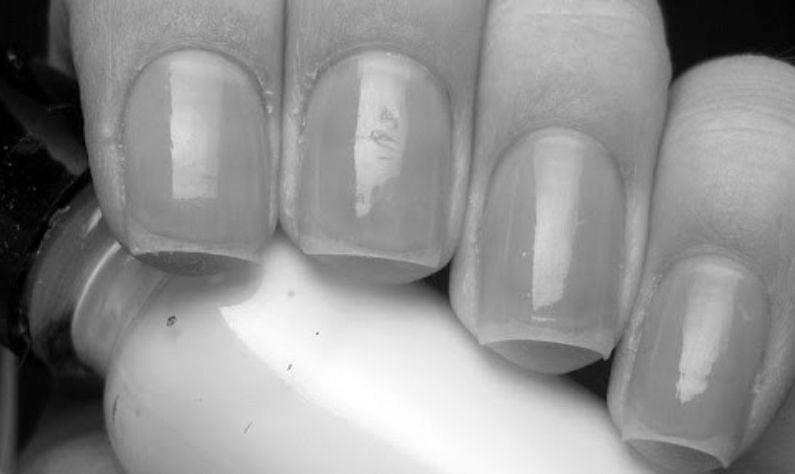
A vitamin deficiency can also cause yellow nails. This is especially true of thin nails. When your nails are light, they are more susceptible to fungal infection or a lack of iron. When your nails are yellow, you’ll probably want to get some supplementation to make them look healthier. Yellow nails are also a sign of malnutrition. Vitamin supplements for nails can correct the deficiency over time.
To make your nails white again, use a whitening toothpaste that contains vitamin E. This toothpaste contains vitamin E, which can improve the appearance of your nails and skin. Try applying it to the top and undersides of your nails. Leave it on for five to ten minutes. You’ll notice a marked improvement. You can even try applying white toothpaste to your nails to avoid discoloration. It will also help restore the natural color of your nails.
If you’ve tried various vitamin supplements for yellow nails but had no success, it might be time to change your diet. Including more fruits and vegetables in your diet may help improve the appearance of your nails. Biotin can also strengthen your nails and make them stronger. To find out more, talk to your healthcare provider. Then you can decide if vitamin supplements are right for you. When taking supplements, be sure to ask your healthcare provider to recommend one that contains biotin.
One of the main reasons a vitamin deficiency may lead to yellow nails is a lack of vitamin C. When a person doesn’t consume enough vitamin, their nails become discolored, yellow, and brittle. It is possible to have a vitamin B3 deficiency and have half-and-half nails. The symptoms of a vitamin B3 deficiency can also lead to diarrhea, dementia, and even death. Vitamin B3 is also linked with hyperpigmented skin on areas of the body that are exposed to the sun.
A simple physical exam can help you determine if you have a yellow nail condition. A fungal infection can be treated with over-the-counter or prescription antifungal medication. If your nail condition is more serious, your doctor may recommend a vitamin D supplement to help treat the infection. However, if the discoloration is a sign of anemia, you should visit a doctor. Your physician may prescribe high-quality vitamin D supplements to help improve your condition.
Other treatments for yellow nails include zinc, vitamin E, and a topical corticosteroid with active vitamin D3. CAM has also been effective in treating YNS in two cases. However, it failed to improve eosinophilic bronchial disease. The treatment of CAM for YNS should be based on a proper diagnosis. It is also important to note that vitamin E and zinc are essential for your body’s health.
Fungal infection
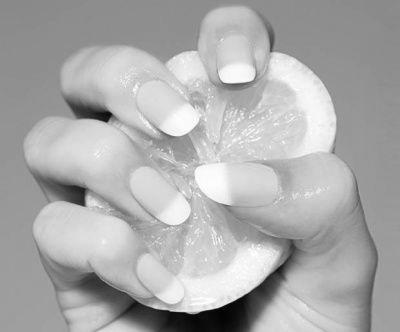
You may have a fungal infection if you notice yellowed or discolored nails. Fungal infections affect the nail plate, causing the nail to become thick and crumbly. If you ignore the problem, your nails may begin to deform and crumble. In addition to being unsightly, a fungal infection can also lead to a foul smell. Fortunately, there are treatments available to quickly get rid of your yellow nails.
A fungal infection affects the keratin in your skin and nails. It occurs in approximately ten percent of the adult population. The risk increases as you age. Half of the people over the age of 70 get a fungal infection. People with poor blood circulation may be at risk for it. A fungal infection can affect anyone, including children. So, if you’ve noticed a yellowish color in your nails, see your doctor.
The first step to treating a fungal infection is to clean and disinfect your environment. The environment where the fungus thrives in warm and moist. Your hands and feet may get infected in these conditions. A common cause is sharing towels. Regularly cleaning bathrooms can help reduce the risk of a fungal infection. Ultimately, you’ll want to get rid of the disease before it worsens.
Usually, the infection will clear up within a few months, although severe cases may require surgical removal. A doctor will recommend a medication that will treat your fungus, but the long-term effect may not be visible.
Over-the-counter antifungal creams and solutions with ingredients like clotrimazole and undecylenic acid can treat a fungus infection. Vicks VapoRub may also help, but it will not altogether remove the fungus. If you notice thick, yellow nails, it’s best to consult with a dermatologist as soon as possible.
To determine the type of fungus causing your fungal infection, your healthcare provider will take a sample of your nail. A representative from the nail bed should be obtained from the site closest to the cuticle. The underlying nail bed can also be examined. If you suspect a fungal infection by noticing white streaks on your nail, you can also take a sample of the nail surface for a closer look.
In addition to cleaning the infected nail, you should wear clean socks and shoes. Always remember to wash them in hot water with disinfectant. If you wear shoes or socks that are damp from sweat, you should replace them with clean ones. You may also try wearing antifungal foot powder inside your socks. Keeping your nails short and filing them will also help prevent the infection. Buy new socks and shoes to keep the fungus from affecting your other nails.
Why Are My Nails Pitting and Turning Orange?
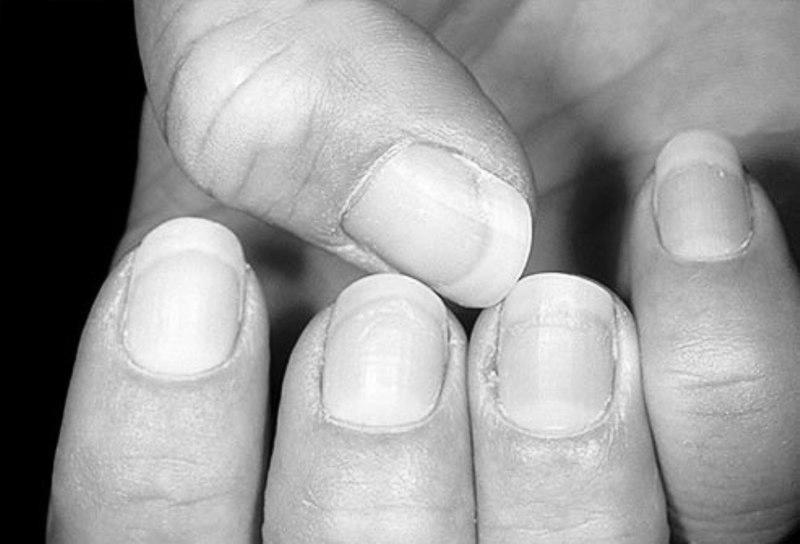
You’re not alone if you’ve ever wondered why your nails are pitting and turning orange. Psoriasis, fungal infections, and even COVID can be the culprit. Pitted or orange nails are signs of many health problems, but you need to determine what’s causing them. Here are some causes and treatment options for this condition. A quick internet search will turn up plenty of information on the topic.
Pitted or split nails may indicate psoriasis.
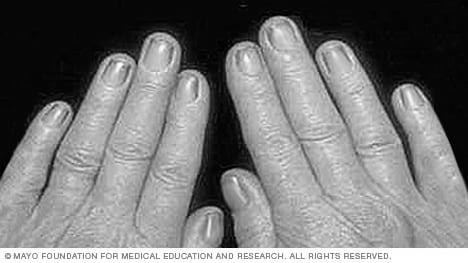
When your nails show signs of pitting, you should see your doctor. Typically, your physician will do a physical exam, look at your medical history, and analyze the appearance of your nails. This information can help your physician determine whether you have psoriasis or another type of nail disorder. Your doctor may perform a biopsy to examine nail tissue under a microscope to confirm the diagnosis.
Other signs that your nails may be infected are salmon patches and oil drop patches on the surface of your nails. These spots develop when cells begin to peel off the nail plate, creating pits. Sometimes, they may look like a fungal infection, or you might notice a reddish or yellow patch under the nail. Even though it may look like a fungal infection, nail psoriasis can be treated with topical retinoid or oral medication. In some cases, ultraviolet radiation therapy may also be recommended.
In addition to splitting or crumbling nails, you should avoid prodding your cuticles to remove debris. Driving your pins can exacerbate the condition and lead to an outbreak of psoriasis. Additionally, avoid wearing artificial nails because they contain chemicals that damage the nail bed. Keeping your nails short may also help minimize trauma from everyday tasks. In addition to keeping them clean, keeping your nails short can discourage buildup beneath them.
Pitted or split nails may be an indication of psoriasis. This inflammatory disease is caused by an immune reaction that causes the body to produce too many skin cells. This inflammation affects the skin and joints, causing thick patches on the affected areas. It can also affect your nails, making them appear brittle and insecure. In severe cases, pitted or split nails can interfere with your daily activities.
While many pitted or split nail cases are not severe, it is essential to consult a doctor if you notice them. A nail biopsy will help confirm the diagnosis. Without treatment, the condition can worsen, making it difficult to perform basic tasks. A professional treatment will help alleviate these symptoms and prevent psoriatic arthritis from progressing. If you see a doctor for treatment, your symptoms may be a symptom of psoriatic arthritis or an indication of psoriasis.
Fungal infections
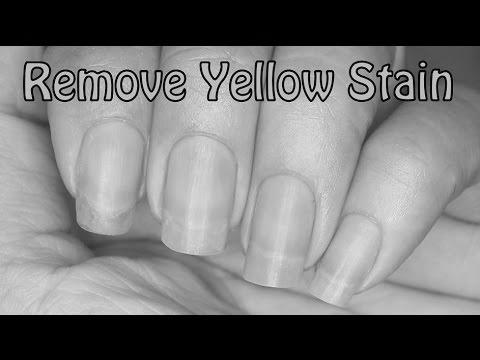
Pitting and turning orange nails can be caused by fungus. Two main types of this infection are distal subungual onychomycosis. In distal subungual onychomycosis, the fungus infects the interior of the nail plate (not the nail bed) and results in thick, orange, or white nails. In white superficial onychomycosis, the fungus affects the outermost layer of the toenail plate and results in a white or milky appearance.
Although treating a fungus infection can be complex, several home remedies and over-the-counter antifungal medications are available to help treat it. Various antifungal creams and solutions contain clotrimazole or undecylenic acid, and many people find relief using Vicks VapoRub or tea tree oil. You may also want to consult a dermatologist for a culture of your nails.
The gradual separation of the nail is painless, but it can create a pocket for a fungal infection. Approximately one-third of nail psoriasis patients will experience a fungal infection. The skin cells build up under the nail during nail dissolving, causing a chalky or flaky surface. The constant pressure from shoes may also cause your nails to peel and become brittle.
Based on the symptoms, your healthcare provider will probably diagnose you with a mycotic infection. Treatment for the disease usually involves antifungal tablets, creams, or solutions. Sometimes, nail removal is necessary, and some people experience severe pain in their nails due to this infection. If the condition is not treated, it can spread and cause other health problems. A nail clipping is recommended before treatment begins.
If you’re concerned that your nail is infected, don’t wait until your symptoms appear. Fungus infection can be caused by various factors, including nail polish, ingrown toenails, or an infected fingernail. Some people may experience no symptoms, and the condition may clear up without treatment. In severe cases, antifungal medication will be prescribed.
COVID
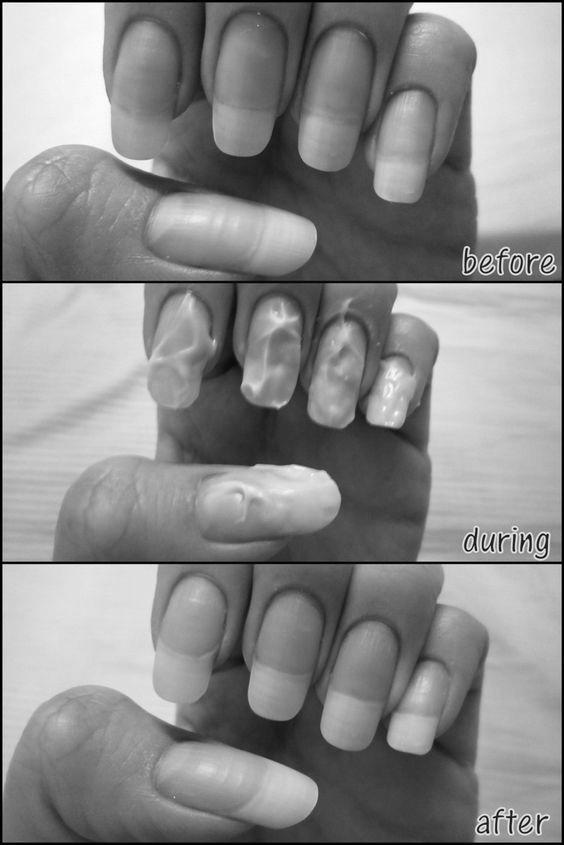
Some people may wonder, “Why are my nails pitting and turning orange?” This strange symptom may be an indication of an underlying systemic disease. It may simply be a temporary pause in nail growth in some cases. This problem can be a sign of an infection with a virus-like COVID. Alternatively, it may be a sign of an autoimmune disease. A doctor can help determine the cause of the problem by running various tests on the patient.
Yellow nails can be a symptom of fungal infection or psoriasis. In some cases, it may also be a symptom of respiratory disease. This condition usually occurs years after the initial outbreak of psoriasis. If you think you might be suffering from yellow nails, it’s essential to visit a dermatologist immediately. Sometimes, nail pitting is an underlying health problem like lung disease or liver failure.
Pitting on the nail is a symptom of psoriasis. It may appear as a single pit or many small pits. It can also occur as white spots on the nail surface, similar to the appearance of an ice pick. In severe cases, nails can fall off entirely or crumble, indicating psoriasis or psoriatic arthritis.
In some cases, nail changes are an indication of a disease. Specific colors are warning signs of a particular illness, such as psoriasis. Fortunately, nail changes do not always signal disease, and you can often make yourself feel more comfortable by following some essential management tips. Even if your condition is not severe, a dermatologist can help you find the cause and get on with your life.
Nail pitting can be painful. Your doctor may prescribe an ointment that will reduce the inflammation. This medication will only take seven days to start working. If you’re not satisfied with the results, you can go in for surgical treatment if the problem persists.
Psoriasis
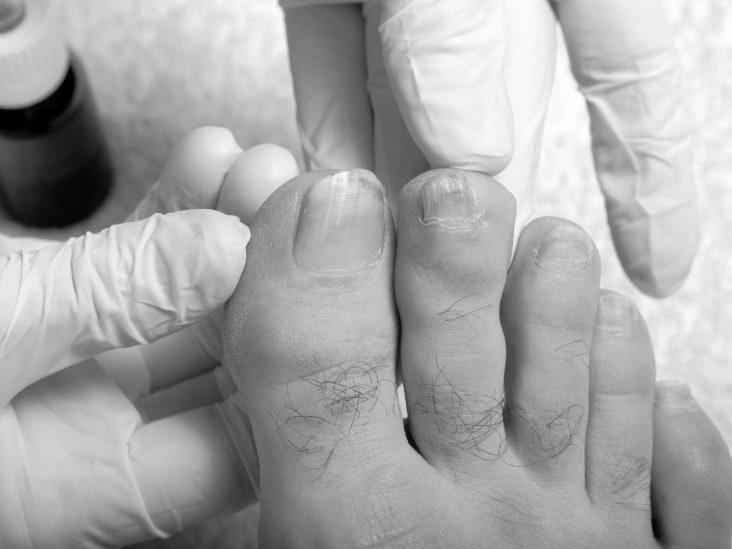
Despite its regular appearance, psoriasis can be challenging to spot, mainly when it affects nails. While this skin disorder affects about half of psoriasis patients, nail changes can occur in as many as 90%. Psoriatic nail disease is diagnosed mainly through a physical examination and medical history, and blood tests and imaging studies cannot reliably interpret the condition.
Some patients may notice a yellow or red patch on the nail bed. This area will be shaped like a drop of oil beneath the nail plate. They may also see a reddish lunula, a tiny half-moon-shaped depression caused by dilated blood vessels on the nail matrix. Other symptoms of psoriasis include orange or yellow-brown color and crumbling or splitting of the nails.
One treatment for nail psoriasis is turmeric, which contains curcumin, the chemical compound responsible for the spicy taste of peppers. Capsaicin creams and ointments may help reduce the symptoms, but these treatments may have side effects such as irritation to the eyes. Another option is to soak affected nails in Dead Sea salt (from the Dead Sea in southwest Asia). This solution is a safe and effective method for treating nail psoriasis.
Another treatment for psoriasis causes pitting and orange nails. A nail-thickening product is used to prevent the symptoms of psoriasis by reducing irritation on the skin and nails. Using a nail hardener and nail polish may help, but only if recommended by a physician. Keeping the nails short can help prevent trauma caused by everyday tasks and discourage buildup under the nails.
Onycholysis is another symptom of psoriasis. The skin underneath the nail may turn yellow, red, pink, or brown, and the tip of the nail can become a chalky substance. The nail can even lift. In some cases, bacteria invade the space underneath the nail, turning the entire pin dark yellow or orange. This condition can lead to an infection and a painful and unsightly appearance if not treated.
